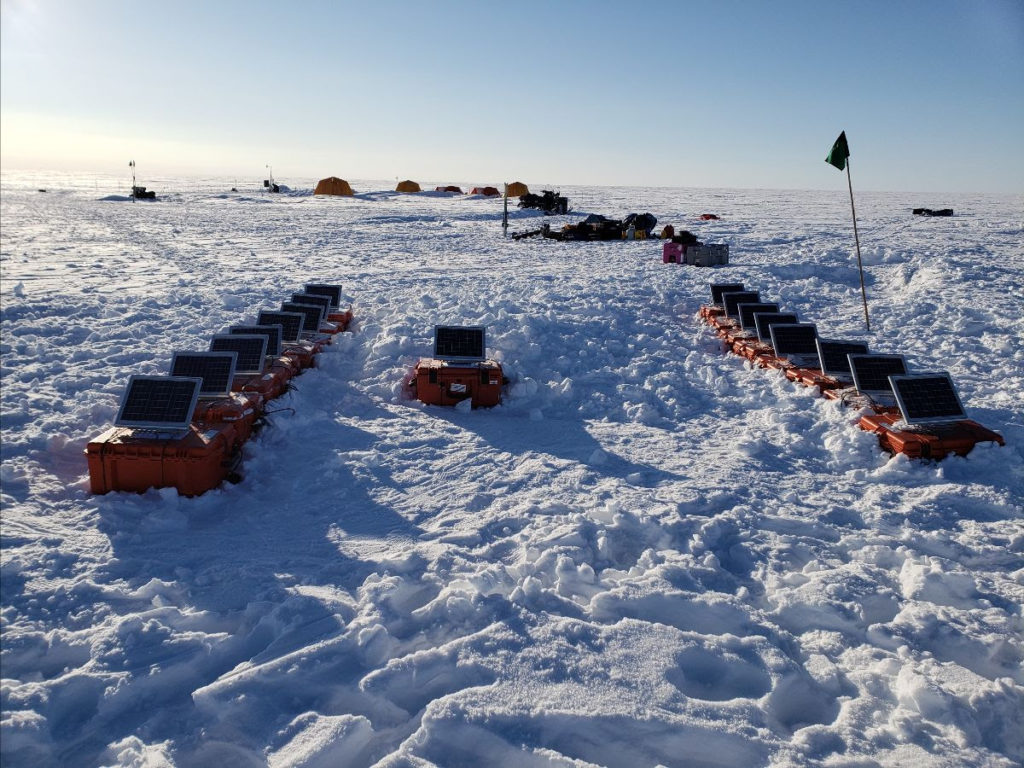The Greenland Deployment
An Exploration of an Analog for Icy Ocean Worlds
In our previous newsletters, we explored the icy depths of Interior Alaska to learn about the successes and learning opportunities of the Gulkana glacier deployment. We travel once again to another polar region to continue the research of the Seismometer to Investigate Ice and Ocean Structure (SIIOS) funded by NASA. After troubleshooting the experimental design used during the Gulkana mission, the SIIOS team treks to Greenland – where the workspace is vaster, and the ice layer is thicker – to further investigate the potential to rapidly deploy a seismic station on the Europa lander.
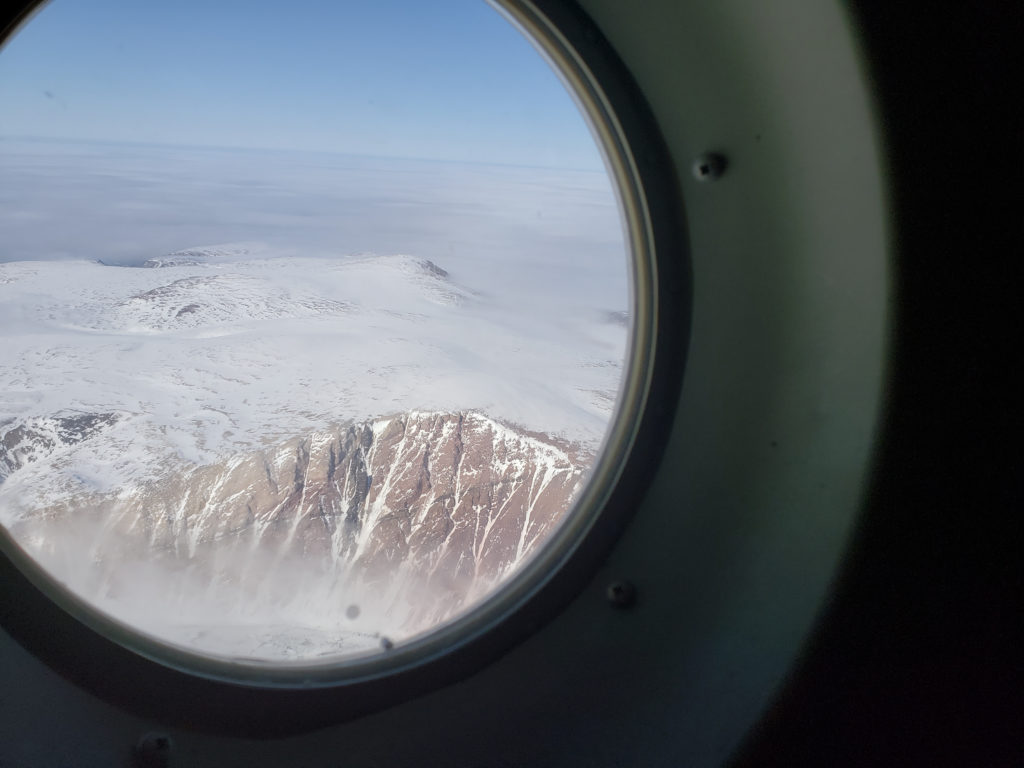
Getting to the actual location of deployment in Greenland was no easy task. The SIIOS team was comprised of scientists from all over the country who traveled through many layovers before arriving at the Thule airbase (now named Pituffik airbase). This was the closest accessible base before traveling via helicopter to get to the analog field site. The team was staggered in their arrival over the span of two days due to inclement weather, one of the major challenges of this experiment. After 6 helicopter loads, all the necessary equipment finally arrived at the field site and work could finally begin.
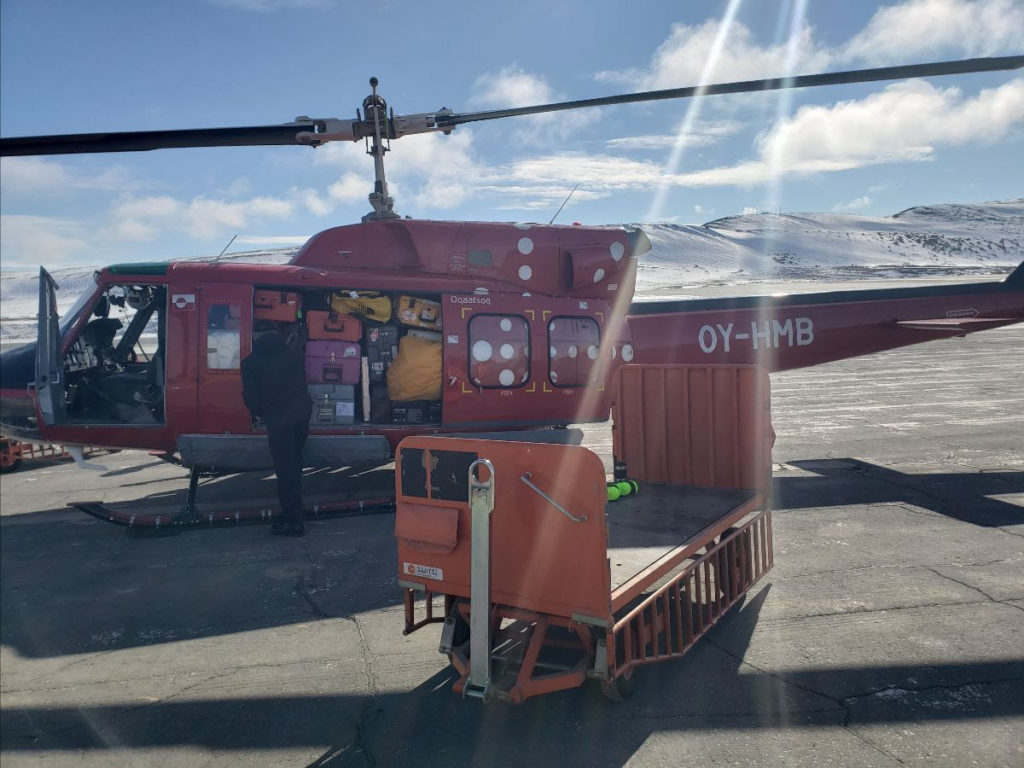
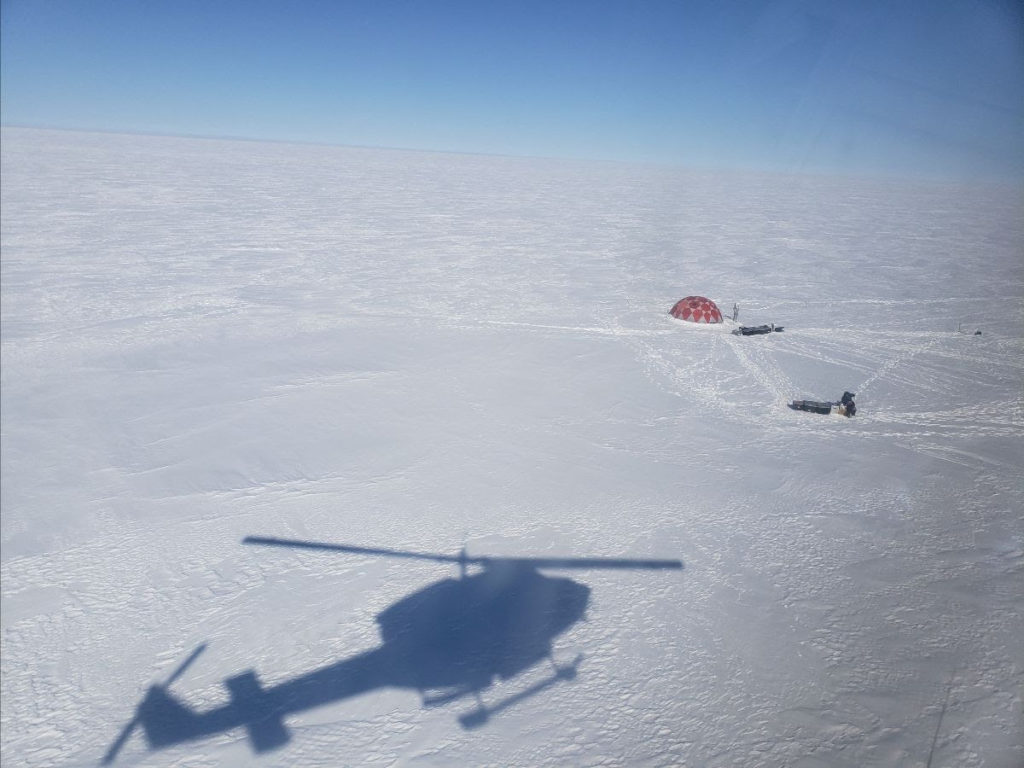
The overall experimental design consisted of the lander in the center and 4 independent stations positioned 1 km out from all cardinal directions. The purpose of this was to compare data from the sensors of the lander versus a small baseline array – i.e., can a single sensor perform as well as an array? A deep hole was dug at the independent stations to mitigate ice from melting and moving the sensors. In addition, the lander was also placed in a deep hole underneath a windshield to replicate the absence of wind on Europa. Many sensors were placed inside the windshield creating a data mine for any future research. Similar to the Gulkana deployment, active and passive source experiments were performed on the Greenland ice sheet.
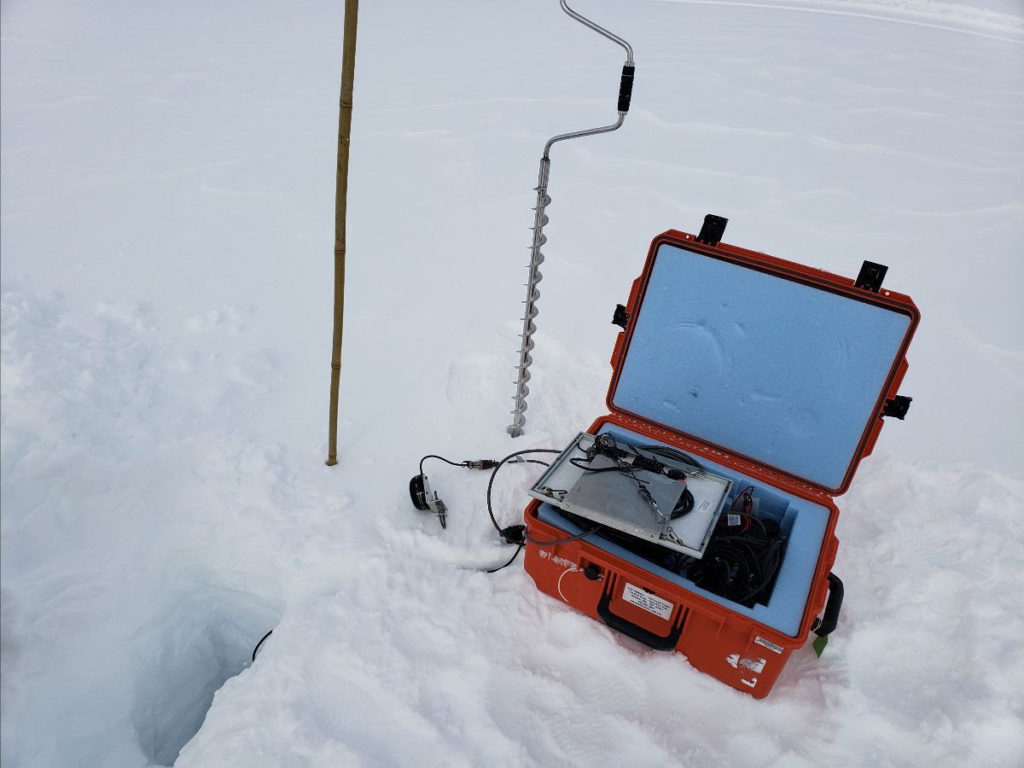
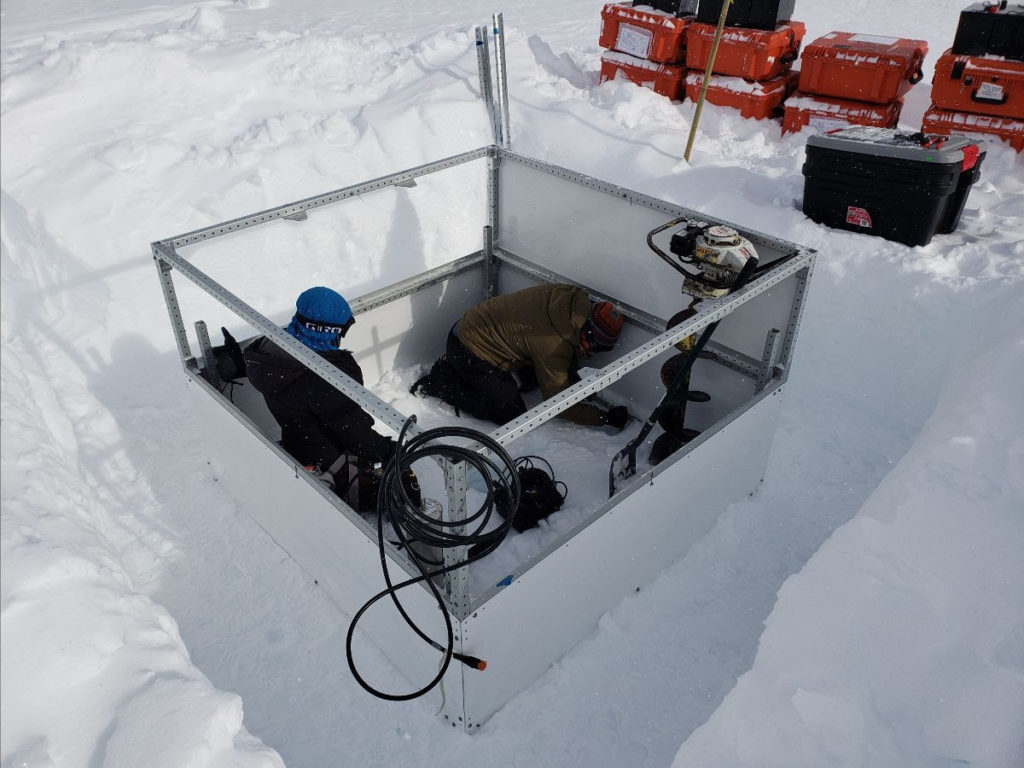


The picture below illustrates the field site right before the team returned to Thule airbase. The orange boxes are the data acquisition systems comprising of batteries and digitizers powered by solar panels. Data was to be collected throughout the summer but only 2 weeks were captured as the snow piled on top of the equipment burying the solar panels and leaving the batteries to die. Despite this, our sensors performed comparably to traditional equipment. The following year, another experiment in Greenland was planned after the discovery of a crater nearby in satellite imagery, however, COVID-19 delayed this project.
